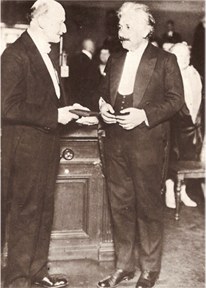The First Solution
Texts by Dr. Antonio Moreno González
In order to find a solution to the inadmissible ultraviolet catastrophe, Max Planck (1858-1947) was forced to propose the quantum hypothesis, which attributed a discontinuous character to the radiation emitted and absorbed. Thus, very much against his will, he opened up - an irreparable breach in the classic foundations of physics which had always maintained that "nature doesn't jump". Planck himself was so astonished, that when he presented his ideas to the Berlin Physics Society, he confessed: "This entire issue can be summarised in three words: an act of desperation. Because I have consciously turned my back on nature... A theoretical interpretation therefore had to be found at any cost, no matter how high. [...] The two laws [of thermodynamics], it seems to me, must be upheld under all circumstances. For the rest, I was ready to sacrifice every one of my previous convictions about physical laws".
At the beginning of his career, Planck shared the ideas of the anti-atomists. In his doctoral thesis, read in 1879, the year Einstein was born (the two would go on to profess unconditional admiration and friendship) he opposed the atomic hypothesis of matter on the grounds that it contradicted the principle of conservation of energy: "Nonetheless the success enjoyed to date by the atomic theory"- he wrote-"will eventually be abandoned in favour of the hypothesis of the continuity of matter". Little could he have dreamt that not only would he one day be forced to accept the discontinuity of matter, but that he himself would propose the discontinuity of energy!
The "quantum" led to quantum mechanics, of which Heisenberg's indetermination principle forms the cornerstone of all the uncertainty regarding the measurements of observable sizes, a principle which Albert Einstein challenged throughout his life.

Max Planck (1858 - 1947) gives the medal with his name on it to Albert Einstein, 1929
